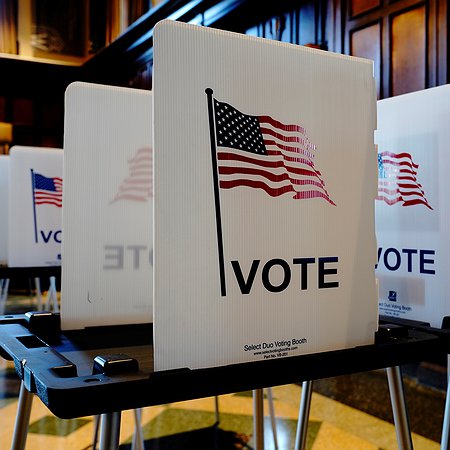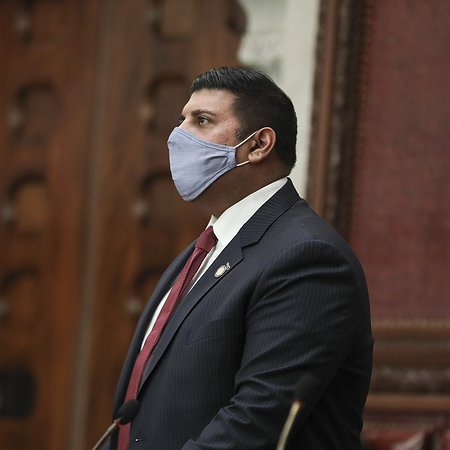Commissioner Sewell falsely links NYC rearrests to bail reform
NYPD Commissioner Keechant Sewell politicized crime to call for further unnecessary and costly changes to modest bail reform
The Briefing

In a recent op-ed in the New York Daily News, NYPD Commissioner Keechant Sewell once again attempted to deflect attention away from the failures of her police force to prevent or solve violent crime by falsely linking any increase in crime to bail reform. In doing so, the Commissioner politicized crime to call for further unnecessary and costly changes to modest bail reform that has proven to be enormously successful for public health and safety.
Manipulation of Data
Despite the NYPD’s admitted history of manipulating their data to achieve political ends – as discovered by the NY Post – Sewell cited unreleased NYPD data to suggest bail reform was responsible for people on pretrial release being rearrested for alleged gun possession or other felonies.
Here is the truth: Bail reform in New York only affected some low level offenses–misdemeanors and non-violent felonies. Violent felonies – including a significant number of charges like the crime Sewell cited (simple gun possession) that include no actual “violence” whatsoever – remain untouched by bail reform. Judges can and do set bail (often in unconstitutionally unaffordable amounts) for charges classified as “violent” felonies, including gun possession, as well as a range of misdemeanors and non-violent felonies. This is the same as before bail reform.
Judges Continue to Use Discretion to Set Bail
The data clearly disputes Sewell’s additional claims that “judges still do not have the discretion they need to detain dangerous and recidivist criminals.” Beyond the dehumanizing and reductionist language used to describe New Yorkers who are presumed innocent, Sewell’s statement is wrong: All violent felonies and a substantial number of non-violent felonies and misdemeanors remain bail eligible.
Just as in every state in the country, New York judges have ample discretion to detain people accused of crimes, just as they have ample discretion to release people when they believe doing so is right. It would defy the U.S. Constitution to require judges to detain certain people. Fortunately recent reporting indicates that judges set bail less than half the time in bail eligible cases, suggesting that they are acting with judicial care, and following their Constitutional duty in the exercise of due process and fundamental presumption of innocence.
Additionally, a person charged with a crime that may not be bail eligible in New York, may still have bail set if they are arrested again while free pre-trial and accused of any crime that involves harm to a person or property. This “harm plus harm” was mostly recently codified into the latest unnecessary and harmful rollbacks to bail reform driven not by facts, but by fear, to allow even people charged with misdemeanor petit larceny to have costly pretrial detention imposed upon them.
Bail Used as Punishment is Unconstitutional
Lastly, Sewell’s suggestion that bail laws need to change to “ensure consequences for criminal actions” is completely contrary to the purpose of bail and fundamental notions of justice.
The purpose of bail is to ensure that a person who is presumed innocent returns to court. It has never been a way to punish a person for an alleged crime, and unaffordable bail violates the Constitution of the United States.
Moreover, increased incarceration for deterrence purposes has no effect on crime. Incarceration is expensive, ineffective and harmful. Pretrial incarceration can exacerbate drivers of crime. By destabilizing and disrupting people’s lives, pretrial incarceration increases the likelihood of future arrests and undermines the health and safety of individuals, families, and their communities.
If jail was an effective public safety measure, people would not continue to commit crimes after release. If arrests, prosecutions, jails and prisons made communities safer, New York should be the safest society in the history of the world, given that we spend more than any other society in the history of the world.
Bail is a Successful Public Policy
New Yorkers – including Commissioner Sewell – should be celebrating the public policy success of New York bail reform, not lying to try to protect the status quo.
The data is clear – bail reform works. Pretrial arrest rates are almost identical pre- and post-bail reform. A recent report shows that just 2.4 percent of people released were rearrested on a violent felony – meaning 97.6 percent of defendants were not. In New York City, a higher percentage of defendants have returned to court since bail reform than during a four-year period before the law went into effect.








